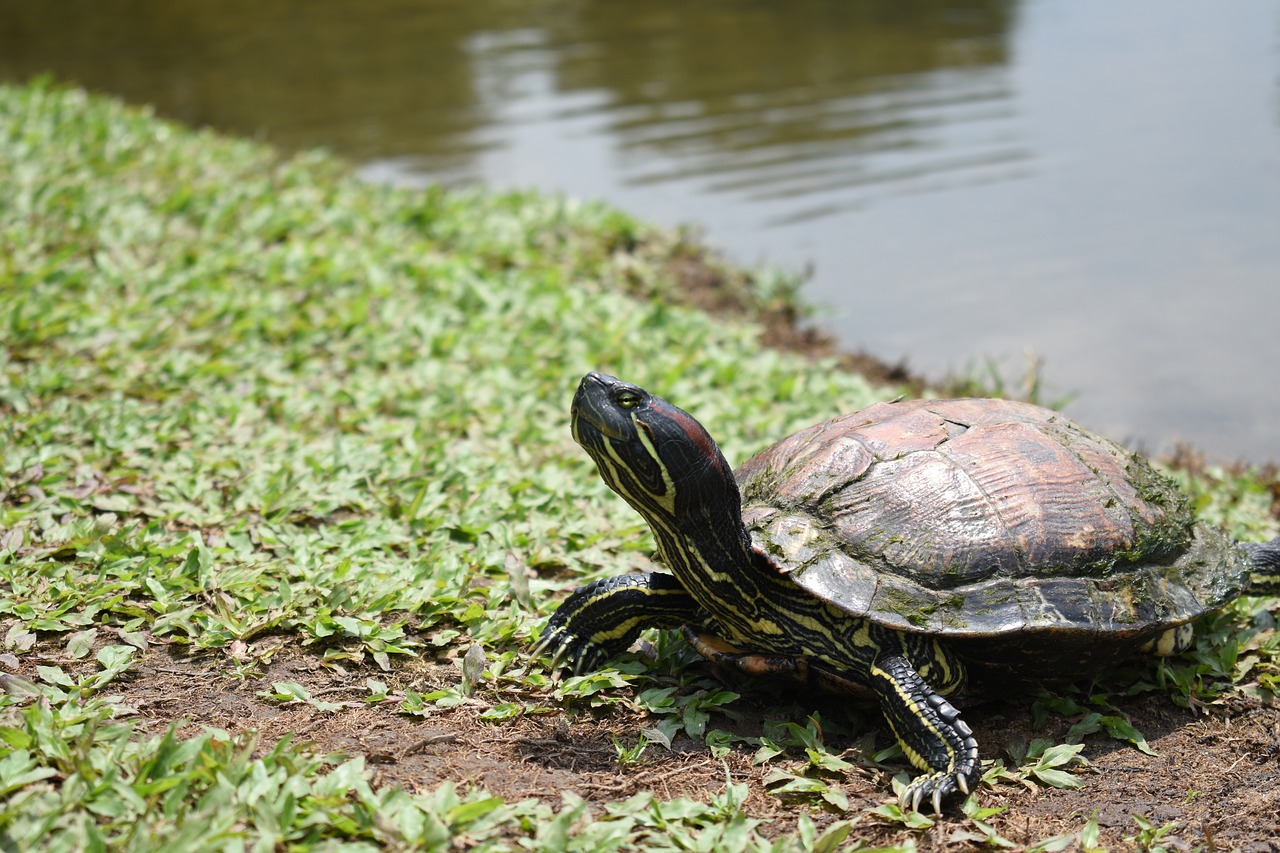
Are you thinking about getting an aquatic turtle to keep in an outdoor pond? If so, you should consider what your reasons are for wanting your turtle outside. Creating an outdoor habitat that improves your turtles quality of life is a great idea. Putting your turtle in an ill-suited outdoor pond because you don’t want a pet in the house, on the other hand, is a recipe for an unhealthy exotic pet that probably won’t survive long.
So, should you keep your aquatic turtle outdoors? The truth is, the answer depends on where you live and whether you’re willing to transfer your turtle indoors for part of the year. Take a look at these considerations before you make a final decision on purchasing an aquatic turtle as an outdoor pet.
Aquatic turtle habitat requirements
Different species of turtles are adapted to different climates. If your turtle is native to the area you live, then keeping it in an outdoor pond should be safe as far as temperatures go. If your turtle, however, is not native to your climate, then you’ll have to be careful about only keeping it outdoors during seasons that are similar to its preferred habitat.
Red-eared sliders are one of the most commonly kept aquatic turtle pets, and they are native to North America. Specifically, wild sliders are most often found in the Southeastern and Midwest United States but can also be found further north and to the west. They tend to prefer warmer seasons, but they are hardy and can do fine in cooler temperatures.
That being said, it’s always recommended to bring your turtles indoors for the winter. Red-eared sliders and other aquatic turtles will likely try to brumate for winter. In nature, it’s a part of their breeding cycle. For exotic pets, however, brumation is not necessary, and a small backyard pond probably won’t provide safe conditions for winter brumation.
Benefits of an outdoor turtle pond
A big benefit to allowing your turtle outdoors, at least in warm weather, is that it gets extra exercise and fresh air. It’s hard to keep a big enough tank indoors because aquatic turtles require a minimum fifty gallon tank when they’re full grown. A pond, on the other hand, provides a swimming area plus more land area for your turtle to roam.
Dangers to your turtle
Almost any pet kept outdoors is at risk from predators, and that is true for aquatic turtles. Turtles kept as pets tend to have longer lifespans than turtles in the wild, if they are well cared for. And predators are precisely the reason why.
Putting up fencing around your pond will reduce the risk. Adding wire fencing over the top of the enclosure is also a good precaution. Remember to place fencing deep in the ground because turtles are good diggers and can escape beneath the fence.
Also remember that even if you keep aquatic plants and fish in your turtle pond, you will likely need to provide additional sustenance for your exotic pet to round out their diet. Check out The Tye-Dyed Iguana red-eared slider care sheet for diet information.
